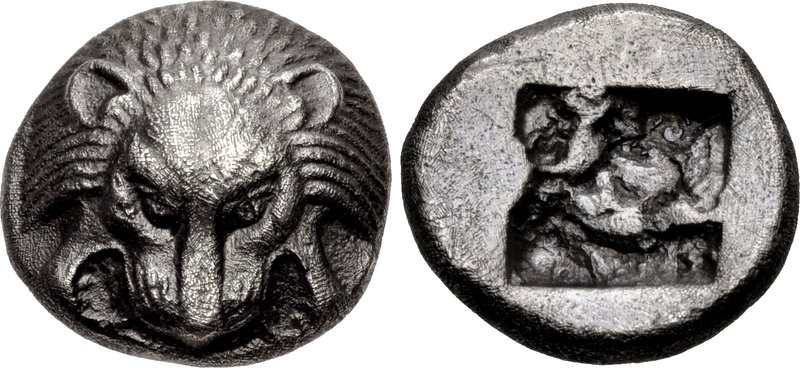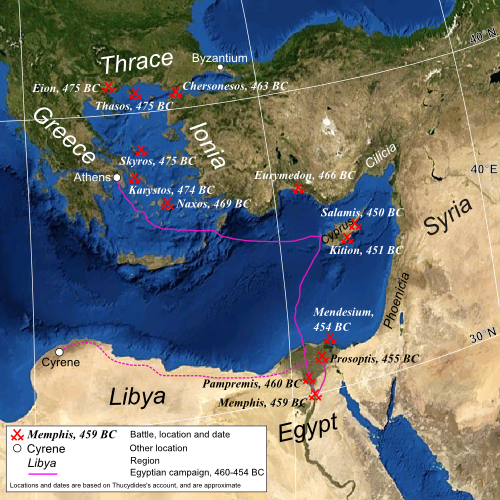|
Stauros
''Stauros'' () is a Greek word for a stake or an implement of capital punishment. The Greek New Testament uses the word ''stauros'' for the instrument of Jesus' crucifixion, and it is generally translated ''cross'' in Christian contexts. This article covers the use of the word for ''other'' contexts. Etymology The word ''stauros'' comes from the verb ἵστημι (''histēmi'': "straighten up", "stand"), which in turn comes from the Proto-Indo-European root *''steh2-u-'' "pole", related to the root *''steh2-'' "to stand, to set" In Antiquity In ancient Greek ''stauros'' meant either an "''upright pale'' or ''stake''", a "''cross'', as the instrument of crucifixion", or a "''pale for impaling'' a corpse".Liddell and Scott: σταυρός In older Greek texts, ''staur ... [...More Info...] [...Related Items...] OR: [Wikipedia] [Google] [Baidu] |
Instrument Of Jesus' Crucifixion
The instrument of Jesus' crucifixion (known in Latin as ''crux'', in Greek as ''stauros'') is generally taken to have been composed of an upright wooden beam to which was added a transom, thus forming a "cruciform" or T-shaped structure. Most Christian denominations present the Christian cross in this form, and the tradition of the T-shape can be traced to early Christianity and the Church fathers. Nonetheless, some late-19th century scholars maintained that it was a simple stake (''crux simplex''). In 2011 Gunnar Samuelsson concluded that there is not enough evidence in pre-Christian ancient texts or in the New Testament writings themselves to resolve the ambiguity of the terms referring to the instrument on which Jesus was executed. On the other hand David W Chapman argues that to take one single greek word and conclude that it has one universal and unchanging meaning like the word stauros “is a common word study fallacy in some populist literature. In fact, such terminolo ... [...More Info...] [...Related Items...] OR: [Wikipedia] [Google] [Baidu] |
Cross
A cross is a geometrical figure consisting of two intersecting lines or bars, usually perpendicular to each other. The lines usually run vertically and horizontally. A cross of oblique lines, in the shape of the Latin letter X, is termed a saltire in heraldic terminology. The cross has been widely recognized as a symbol of Christianity from an early period.''Christianity: an introduction'' by Alister E. McGrath 2006 pages 321-323 However, the use of the cross as a religious symbol predates Christianity; in the ancient times it was a pagan religious symbol throughout Europe and western Asia. The effigy of a man hanging on a cross was set up in the fields to protect the crops. It often appeared in conjunction with the female-genital circle or oval, to signify the sacred marriage, as in Egyptian amule ... [...More Info...] [...Related Items...] OR: [Wikipedia] [Google] [Baidu] |
Impalement
Impalement, as a method of torture and execution, is the penetration of a human by an object such as a stake, pole, spear, or hook, often by the complete or partial perforation of the torso. It was particularly used in response to "crimes against the state" and regarded across a number of cultures as a very harsh form of capital punishment and recorded in myth and art. Impalement was also used during times of war to suppress rebellions, punish traitors or collaborators, and punish breaches of military discipline. Offences where impalement was occasionally employed included contempt for the state's responsibility for safe roads and trade routes by committing highway robbery or grave robbery, violating state policies or monopolies, or subverting standards for trade. Offenders have also been impaled for a variety of cultural, sexual, and religious reasons. References to impalement in Babylonia and the Neo-Assyrian Empire are found as early as the 18th century BC. Methods ... [...More Info...] [...Related Items...] OR: [Wikipedia] [Google] [Baidu] |
A Greek–English Lexicon
''A Greek–English Lexicon'', often referred to as ''Liddell & Scott'' () or ''Liddell–Scott–Jones'' (''LSJ''), is a standard lexicographical work of the Ancient Greek language originally edited by Henry George Liddell Henry George Liddell (; 6 February 1811– 18 January 1898) was dean (1855–1891) of Christ Church, Oxford, Vice-Chancellor of Oxford University (1870–1874), headmaster (1846–1855) of Westminster School (where a house is now named after ..., Robert Scott, Henry Stuart Jones, and Roderick McKenzie and published in 1843 by the Oxford University Press. It was most recently revised for its ninth edition of 1940. Abridged versions and a supplement exist. It was initially the basis for the 2021 ''Cambridge Greek Lexicon'', although subsequently that became a complete rewrite from scratch. Liddell and Scott's lexicon (1843 to 1940) The lexicon was begun in the 19th century, and is now in its ninth (revised) edition, published in 1940. It was based on ... [...More Info...] [...Related Items...] OR: [Wikipedia] [Google] [Baidu] |
Oroetus
Oroetus, or Oroetes (Old Iranian: ''Arvita'', Ancient Greek: ''Ὀροίτης''), was a Persian Satrap of Lydia (c. 530-520 BC), during the reigns of Cyrus the Great, Cambyses and Darius the Great, succeeding Harpagus, and being followed by Bagaeus. He is described by Herodotus in the third book of his '' Histories'', where he achieved notoriety for the death of Polycrates, tyrant of Samos: Oroetus became the first satrap recorded as demonstrating insubordination towards the central power of Persia. When Cambyses (ruled 530-522 BC), who succeeded his father Cyrus, died, the Persian Empire was in chaos prior to Darius the Great (522-486 BC) finally securing control. Oroetus defied Darius' orders to assist him, whereupon the Achaemenid nobleman Bagaeus was sent by Darius to arrange his murder. Oroetus in Art File:The crucifixion of Polycrates the tyrant after his capture by the Persians MET DP837539.jpg, The crucifixion of Polycrates the tyrant after his capture by the Per ... [...More Info...] [...Related Items...] OR: [Wikipedia] [Google] [Baidu] |
Lydia
Lydia (Lydian language, Lydian: 𐤮𐤱𐤠𐤭𐤣𐤠, ''Śfarda''; Aramaic: ''Lydia''; el, Λυδία, ''Lȳdíā''; tr, Lidya) was an Iron Age Monarchy, kingdom of western Asia Minor located generally east of ancient Ionia in the modern western Turkey, Turkish provinces of Uşak Province, Uşak, Manisa Province, Manisa and inland Izmir Province, Izmir. The ethnic group inhabiting this kingdom are known as the Lydians, and their language, known as Lydian language, Lydian, was a member of the Anatolian languages, Anatolian branch of the Indo-European languages, Indo-European language family. The capital of Lydia was Sardis.Rhodes, P.J. ''A History of the Classical Greek World 478–323 BC''. 2nd edition. Chichester: Wiley-Blackwell, 2010, p. 6. The Kingdom of Lydia existed from about 1200 BC to 546 BC. At its greatest extent, during the 7th century BC, it covered all of western Anatolia. In 546 BC, it became a province of the Achaemenid Empire, Achaemenid Persian Empire ... [...More Info...] [...Related Items...] OR: [Wikipedia] [Google] [Baidu] |
Satrap
A satrap () was a governor of the provinces of the ancient Median and Achaemenid Empires and in several of their successors, such as in the Sasanian Empire and the Hellenistic empires. The satrap served as viceroy to the king, though with considerable autonomy. The word came to suggest tyranny or ostentatious splendour, and in modern usage refers to any subordinate or local ruler, usually with unfavourable connotations of corruption. A satrapy is the territory governed by a satrap. Etymology The word is derived via Latin from Greek ''satrápes'' (), itself borrowed from an Old Iranian ''*khshathra-pa''. In Old Persian, which was the native language of the Achaemenids, it is recorded as ''khshathapavan'' (, literally "protector of the province"). The Median form is reconstructed as ''*khshathrapavan-''. It is cognate with Sanskrit ''kshetrapal'' (). The Biblical Hebrew form is ''aḥashdarpan'' , as found in . In the Parthian (language of the Arsacid Empire) and Middle Persia ... [...More Info...] [...Related Items...] OR: [Wikipedia] [Google] [Baidu] |
Polycrates
Polycrates (; grc-gre, Πολυκράτης), son of Aeaces, was the tyrant of Samos from the 540s BC to 522 BC. He had a reputation as both a fierce warrior and an enlightened tyrant. Sources The main source for Polycrates' life and activities is the historian Herodotus, who devotes a large section of book 3 of his '' Histories'' to the rise and fall of Polycrates (3.39-60, 3.120-126). His account was written in the third quarter of the 5th century BC, nearly a century after Polycrates' death, was based mostly on oral traditions and incorporates many folk-tale elements. Furthermore, Herodotus creatively shaped his account of Polycrates in order to make general moral points and to comment on the imperialism of the Athenian empire in his own day. Some poetry from Polycrates' time comments on him in passing and there is a smattering of references to Polycrates in other literary sources ranging in date from the 4th century BC to the Roman Imperial period. These sources preserve u ... [...More Info...] [...Related Items...] OR: [Wikipedia] [Google] [Baidu] |
Xenophon Of Ephesus
Xenophon of Ephesus ( el, Ξενοφῶν ὁ Εφέσιος; fl. 2nd century – 3rd century AD) was a Greek writer.''Suda'' ξ 50 His surviving work is the '' Ephesian Tale of Anthia and Habrocomes'', one of the earliest novels as well as one of the sources for Shakespeare's ''Romeo and Juliet''. He is not to be confused with the earlier and more famous Athenian soldier and historian, Xenophon of Athens Xenophon of Athens (; grc, Ξενοφῶν ; – probably 355 or 354 BC) was a Greek military leader, philosopher, and historian, born in Athens. At the age of 30, Xenophon was elected commander of one of the biggest Greek mercenary armies of .... References More ReadingXenophon of Ephesus’ Critique of Stoic Thinking about Slavery Ancient Greek novelists Ancient Ephesians Year of birth unknown Year of death unknown {{MEast-writer-stub ... [...More Info...] [...Related Items...] OR: [Wikipedia] [Google] [Baidu] |
Thucydides
Thucydides (; grc, , }; BC) was an Athenian historian and general. His ''History of the Peloponnesian War'' recounts the fifth-century BC war between Sparta and Athens until the year 411 BC. Thucydides has been dubbed the father of "scientific history" by those who accept his claims to have applied strict standards of impartiality and evidence-gathering and analysis of cause and effect, without reference to intervention by the gods, as outlined in his introduction to his work. He also has been called the father of the school of political realism, which views the political behavior of individuals and the subsequent outcomes of relations between states as ultimately mediated by, and constructed upon, fear and self-interest. His text is still studied at universities and military colleges worldwide. The Melian dialogue is regarded as a seminal work of international relations theory, while his version of Pericles' Funeral Oration is widely studied by political theorists, historian ... [...More Info...] [...Related Items...] OR: [Wikipedia] [Google] [Baidu] |
Megabyzus
Megabyzus ( grc, Μεγάβυζος, a folk-etymological alteration of Old Persian Bagabuxša, meaning "God saved") was an Achaemenid Persian general, son of Zopyrus, satrap of Babylonia, and grandson of Megabyzus I, one of the seven conspirators who had put Darius I on the throne. His father was killed when the satrapy rebelled in 484 BCE, and Megabyzus led the forces that recaptured the city, after which the statue of the god Marduk was destroyed to prevent future revolts. Megabyzus subsequently took part in the Second Persian invasion of Greece (480-479 BCE). Herodotus claims that he refused to act on orders to pillage Delphi, but it is doubtful such orders were ever given. Revolt According to Ctesias, who is not especially reliable but is often our only source, Amytis, wife of Megabyzus and daughter of Xerxes, was accused of adultery shortly afterwards. As such, Megabyzus took part in the conspiracy of Artabanus to assassinate the emperor, but betrayed him before he cou ... [...More Info...] [...Related Items...] OR: [Wikipedia] [Google] [Baidu] |








